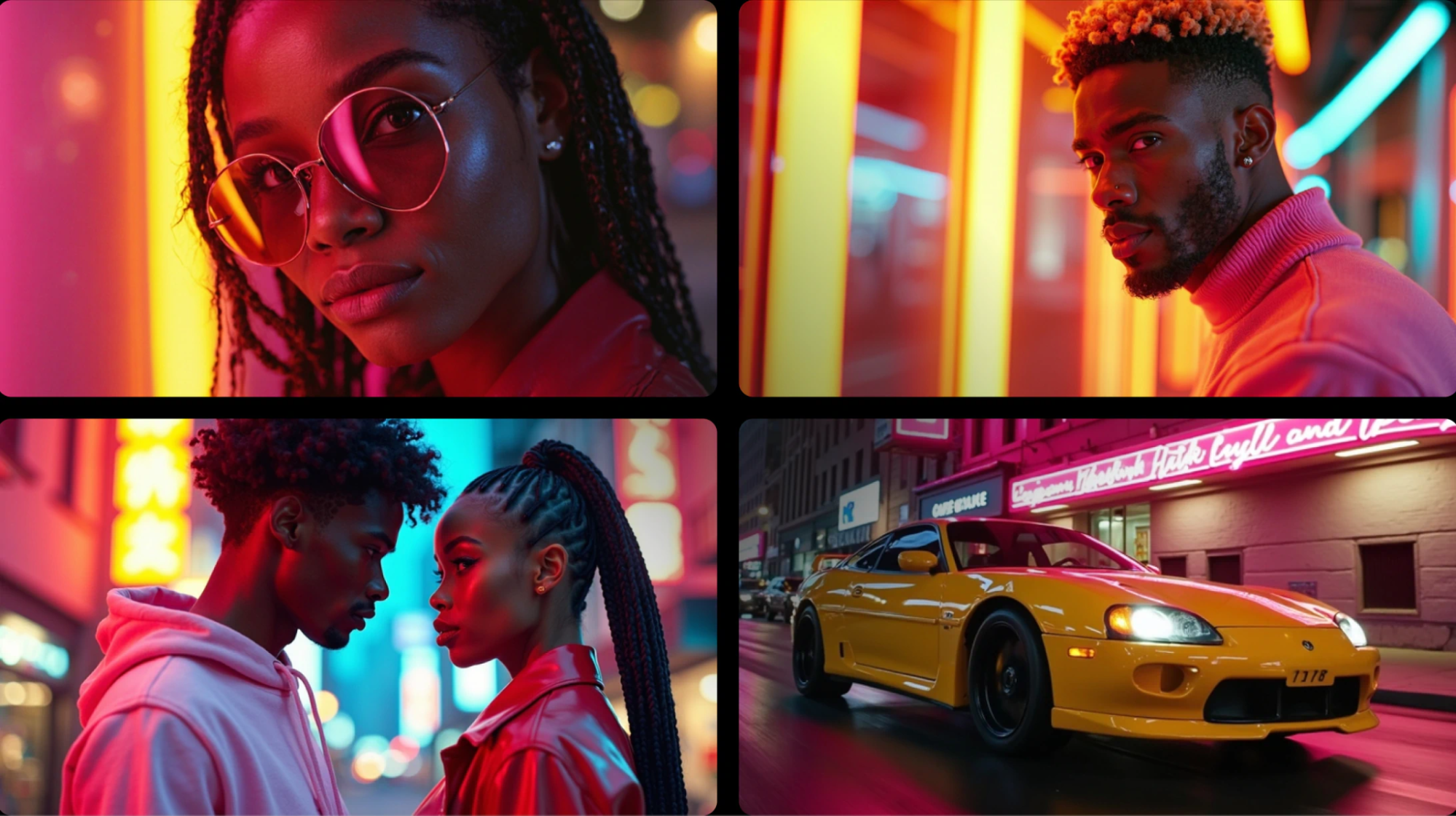Seizing upon the rapid advances in generative AI over the last few years, Lightricks has been shifting its focus from consumer-oriented mobile apps for visual content creation to highly sophisticated tools aimed at professional video teams.
Perhaps appropriately given its name, this Lightricks pivot has been lightning fast. Founded in 2013, the Israeli company spent its first decade building up as a major player in visual content creation, with smartphone applications such as Facetune, Photoleap and Videoleap putting the power of AI-powered editing into the hands of anyone. Each of those apps focused on a different aspect of photo and video editing, enabling anyone to easily transform visuals within a simplified user interface.
The sudden emergence of ChatGPT in late 2022, along with the rise of generative AI image creation tools like Midjourney, Ideogram and DALL-E could have spelt doom for Lightricks, with many capabilities of these models surpassing the functionality of Lightricks’ suite of aps at the time. After seeing some success with integrating generative AI features into its apps, CEO Zeev Farbman recognized that Lightricks’ expertise in the visual creativity space could be combined with large language models to create more powerful and accessible content creation tools.
“We were already putting powerful yet easy-to-use editing tools into the hands of everyone, so it made sense to apply business use cases of generative AI to visual content creation,” Farbman explains in an interview. “Let’s give professional users more control over the process of creating AI images and videos. Let’s give researchers and software developers the open models that they need to push AI use cases further. And let’s see what magic they come up with.”
Embracing Generative AI
The ambitious company applied its AI knowhow to the cutting edge of LLM development, and the result was one of the first open-source video generation models. Lightricks launched LTX Video, or LTXV, last year, a foundational model embraced by the ecosystem of video AI researchers. The model was also integrated into Lightricks’ web app for video storyboarding, LTX Studio.
Targeted at professional marketers, social media influencers, ad production teams and aspiring filmmakers, LTX Studio provides access to powerful video generation functionalities and a comprehensive suite of editing tools that make the creation of slick, professional-looking videos, almost trivial, eliminating the need for expensive pre-production treatment shoots. With LTXV at its heart, creators can use LTX Studio to outline their concept in natural language, creating a storyboard as a starting point, and then continually refine and collaborate on various elements of the project until they come up with a perfect representation of their original vision.
Motion capture, keyframes, style reference image uploads, inpainting and outpainting features, and modules for creating characters and locations with consistency help along the way. Now there’s even a timeline-based video editing interface for putting together production-ready footage within LTX Studio.
As a foundational model, LTXV hit with the AI community after Lightricks took the decision to make it available for free on platforms like Hugging Face and GitHub. While almost all of the most powerful video generation tools, such as Sora and Runway, have been locked behind proprietary licenses, Lightricks has differentiated itself from the rest of the ecosystem by prioritizing both quality and speed, optimizing LTXV for accessibility.
Along the way, with each release of the model, community developers have been able to tweak the model for their own purposes while integrating advancements that have improved its capabilities. “We made a conscious decision to open-source LTX Video, which was already a large component behind our popular LTX Studio platform, because we know how powerful and fast open-source development can be,” Farbman says.
“By opening it to the community of open-source software developers and academic researchers, we’ve encouraged a lot of experimentation with the model, and everyone benefits from the contributions of really useful enhancements,” he continues. “We believe that open source will fuel amazing innovation across the AI ecosystem.”
Many of those community-led updates were integrated with LTXV’s successor. Earlier this year, Lightricks debuted LTXV-13B, with 13 billion parameters for higher-quality output and major speed enhancements, allowing creators to spin up new videos up to 30 times faster than competing models. LTXV-13B is notable for its lightweight architecture, which allows it to run at impressive speeds even on consumer-grade laptops, vastly increasing its accessibility for developers.
Professional Editing With AI Copilots
After establishing itself in the consumer app space, it was no small feat for Lightricks to switch focus towards more complex, business-focused software. But Farbman knew that the company’s experience in making technical tools simple would be welcomed by business users, and the transition came at a time when generative AI was making great strides in terms of business adoption.
In LTX Studio, AI copilots are at the front and center of the user’s experience, making it easy to tinker with every aspect of video projects using natural language commands and intuitive settings. Users begin by brainstorming or outlining a very rough vision, and from there the copilot helps them flesh out all of the details step-by-step, allowing non-technical users to create highly polished, professional-looking videos with efficiency.
“Our experience with consumer apps taught us that simplicity is the key to mass adoption,” Farbman explains. “Consumers want something they can just pick up and start creating clips without messing around too much, and business users aren’t all that different. Professionals have very little time and have to get a lot done every day, so they don’t want to be fiddling around with apps that involve a major learning curve. With AI copilots operating under the hood of LTX Studio, there’s no need for extensive training – people can just dive in and start creating.”
Another advantage of the AI copilot model is that it becomes possible for people to continuously iterate on their visions. With simple commands, users can adjust minute details like the actor’s skin tones or the way their hair blows in the wind, to get every aspect of the video looking just right.
By simplifying video creation, LTX Studio frees up marketing teams to pay more attention to their overall narrative and their broader strategy, increasing the impact of their campaigns. This approach also makes it easier for teams to communicate ideas to their clients, which has traditionally been one of the more challenging tasks for video production studios and advertising agencies. With a tool like LTX Studio, it only takes a few minutes to outline the basic pitch deck concept of a campaign and create a rough interpretation for others to review and collaborate on.
The open-source nature of LTXV has also given Lightricks the flexibility to create a scalable business model that’s appropriate for enterprise adoption. Having competed in the highly saturated consumer market, the company had already seen success with the “freemium” model, and it ultimately adopted a similar approach with LTXV, structured in a way that encourages developers to integrate the model into other products.
LTXV is free to license for small businesses with revenue of less than $10 million per year, while those who earn more than this are required to pay for a license. Alternatively, business users can access LTXV through the subscription-based LTX Studio app, where they’ll be able to utilize its comprehensive range of professional editing tools.
A New Era of Hybrid Design
Lightricks’ evolution was further aided by the realization that enterprises can’t afford to shoulder intellectual property risks when it comes to publishing AI-generated content. The company has established partnerships with leading professional visual libraries including Getty and Shutterstock to augment LTXV’s training dataset with ethically-sourced content of exceptionally high quality.
“It was important for us to listen to our customers and the sentiment of AI users in general and address concerns around ownership and compensation,” Farbman says. “While early training datasets were created from publicly available materials, enterprises nowadays are interested in adopting AI tools that use licensed data, so moving in this direction has been key to our positioning.”
Lightricks’ decision to switch its focus from consumers to business users has put the company in a unique position to shape the future of creative work, which Farbman believes will also transition to more of a hybrid design model.
“We’re moving towards a world where AI will augment every aspect of human creativity,” he concludes, “enabling enhanced personalization at a scale much greater than anything we’ve seen before.”



































